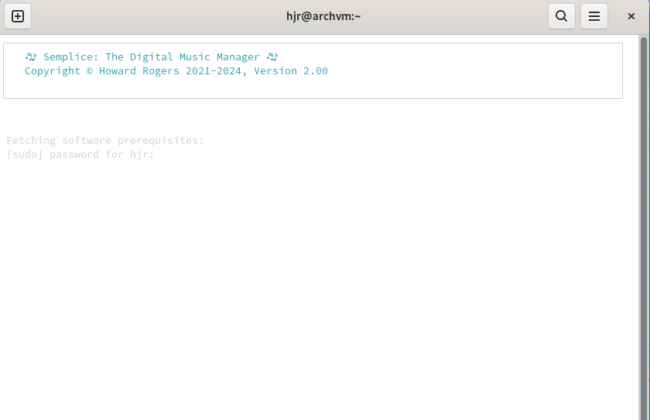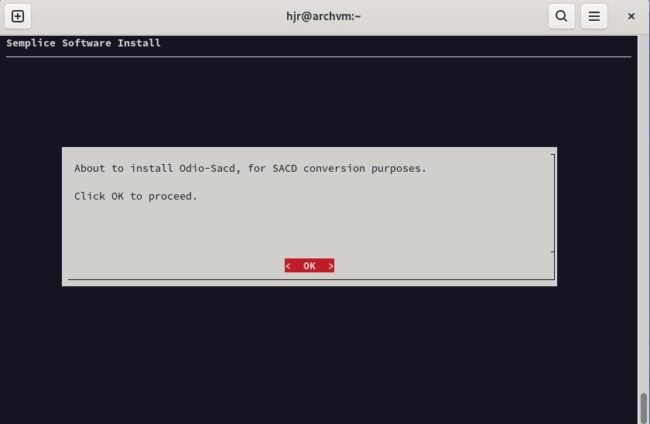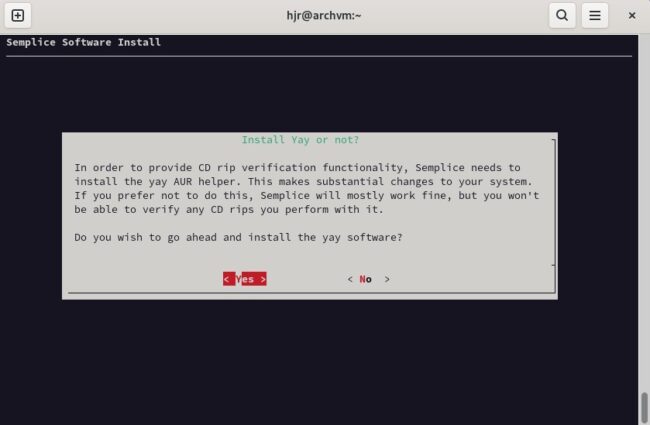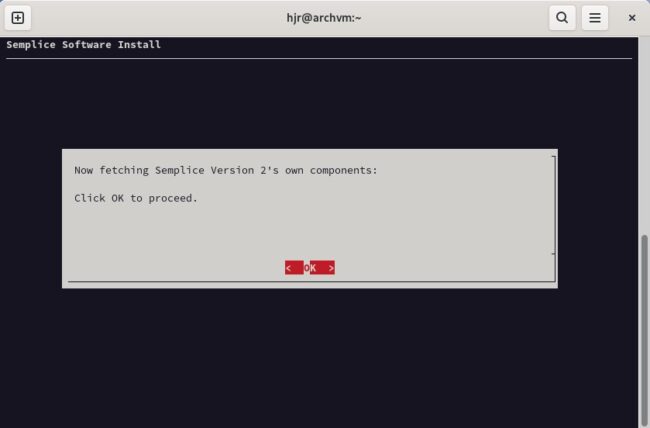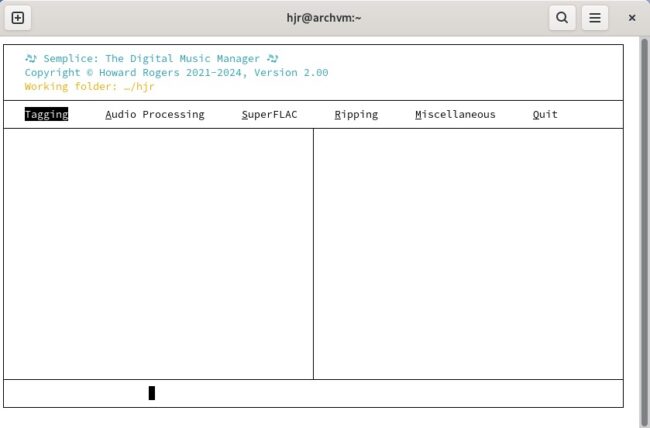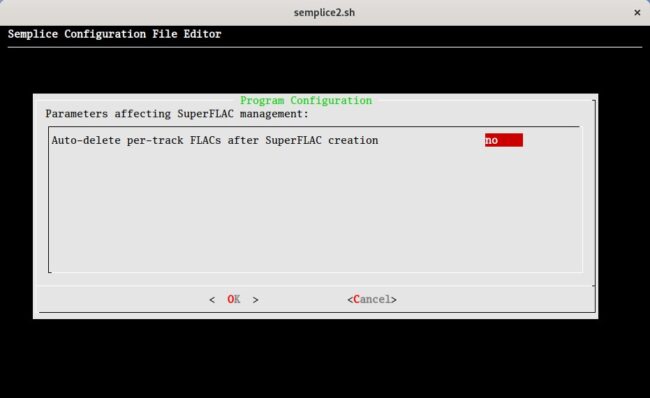 1.0 Introduction
1.0 Introduction
Arch is a slightly awkward distro to document because it starts off as a very minimal operating system and is thereafter highly customised by each user, resulting in a platform that is quite possibly unique -with a unique bunch of 'issues' and 'quirks' that might mean that anything I describe below might not actually apply to you or work as intended!
Accordingly, this document starts with a disclaimer: I'm running Gnome-on-Arch, installed according to the instructions I give in an older article. I am reasonably confident that the Semplice Version 2 installation will work fine on any Arch platform that follows those sorts of installation instructions ...but obviously cannot guarantee it!
As with all these installation articles, I assume a fresh, default installation of the underlying operating system, tweaked as per that older article to install nano, sudo, wget and so on.
2.0 The Installation
We begin by opening a new terminal session and typing the commands:
cd
wget doco.absolutelybaching.com/seminst
bash seminst
The first 'cd' just makes sure you're in your /home/username folder. The wget command downloads the Semplice Version 2 installer. The bash command then launches that installer:
A screen-full of warning text advises you that installing Semplice will make quite considerable changes to your system. Those changes are as follows:
- Full system update, if needed
- Installation of ImageMagick, Ncurses, Cuetools, Flac, Ffmpeg, Curl, Dialog and other minor audio-visual helper programs
- Installation of the base-devel program group, along with python, allowing source code to be compiled into working executables
- Installation of sacd, in order to be able to work with ISOs ripped from SACDs
- Installation of yay (if not already present on the system)
- Installation of the python audiotools package from the AUR
Additionally, of course, once all that preparation has been done, the Semplice installer will... er, install Semplice Version 2!
You can decline to proceed at this point: you will additionally get the option later on to not install yay or audiotools. The lack of audiotools means that Semplice will work normally, but it won't be able to verify CD rips by looking up the AccurateRip database.
If you wish to proceed, type 'y' and press [Enter]:
You are prompted to supply the sudo password, since the installer needs to install a bunch of programs and copy files to /usr/bin, all of which operations require root privileges. The default terminal colour scheme may initially make reading what then happens tricky:
You could, of course, temporarily alter the terminal's colour scheme to make things a bit more legible. Otherwise, if you just let it do its thing, the screen will eventually change by itself to display this:
...which is substantially more legible! This is a 'waymark' of sorts: it's telling you that the installation of third-party programs and libraries that Semplice depends on has completed successfully. If you now click [OK] at this point, the Semplice installer will move on to the next stage of the installation process, which is the installation of the sacd ISO-reading program (the screenshot mentions "odio-sacd" because that was the name of an earlier SACD helper program: these days, plain 'sacd' is used instead):
Again, click [OK] to proceed:
The sacd installation process then involves a lot of downloading and building. Once sacd compiles correctly, it moves on to the bit where it offers to install yay (and then use yay to install the audiotools package). If your system already has yay installed, you won't be asked about this process: Semplice will just install audiotools and have done with it. If yay is not installed, however, then you will be asked if you want to install it -because it's a pretty big deal to do so:
As I mentioned earlier, you can hit the 'no' option at this point and avoid installing yay and/or the audiotools package at all. Doing so doesn't compromise Semplice's functionality very much: the only difference it makes is to whether or not Semplice can interrogate the AccurateRip database when performing standard audio CD rips. The rips themselves will be no less (and no more) accurate than they ever were ...but you won't know it for sure! If you want that functionality but still don't want to go through the hassle of some weird script from the Internet installing something quite so fundamental as yay, you can install audiotools yourself after the Semplice installation concludes, using whatever AUR helper program you're more comfortable with (such as pamac, for example). The choice is yours, basically. I'm going to press [Enter] to accept the [Yes] response (or you can click that option with your mouse if you prefer):
The yay installation process involves downloading a lot of programs and installing and compiling them -and that's quite an interactive process. To start with, as you see here, you'll be asked for your sudo password once again. There will be various other prompts during the process, however: if you know what you're doing, feel free to answer them intelligently! For everyone else (including me), just answer 'y' when prompted. For example:
The process is ugly and can look very intimidating, but don't let it put you off. Just answer 'y' whenever asked and eventually you'll see this:
At this point, therefore, all of Semplice's software dependencies, including the optional ones on sacd and Audiotools, have been satisfied... and thus it's time to install Semplice's own files. Click [OK] to start that process:
You'll see a series of dots appear in a region towards the bottom of the screen. Each dot represents one of Semplice's files; if an 'X' appears instead of a dot, it means that fetching the file has failed for some reason. You'll be offered a chance to re-try should any failures occur. If worse comes to worst, you can simply re-run the entire installation procedure (by re-issuing the bash seminst command) to fix any errors arising from, say, this site's temporary unavailability. A re-run Semplice installation will whizz through the software prerequisites part of proceedings (because, of course, everything Semplice depends on has, at this point, already been installed) and jump straight to this file copying routine. Once all the files have been fetched without error, you'll see this new message appear:
This is the file verification procedure: Semplice generates a hash sum for each of the files it's just downloaded and compares that hash sum with a list of known good hashes that I keep on this site. If the two match, we can be sure that your downloads were good ones. If they don't, you'll be warned and a second attempt to fetch known-good files will be made. Click [OK] to kick off the verification process -and be patient, because it takes a while to complete and there's no particular evidence of anything happening whilst it does so. A blinking cursor in the bottom left-hand corner of the screen is about all the indication you'll get that the installer is doing something, I'm afraid! After what will feel like hours, but is in reality only a matter of 30 seconds or so, you'll hopefully see this:
This is the point where you know the Semplice installation has completed and been successful. If instead you get a message that says, "Verification of downloaded files has failed: Click OK to try downloading again" then you should click [OK] (or press [Enter] which amounts to the same thing) and let the installer have another attempt. It is in any case unusual to need a second attempt, however, and usually the second attempt fixes things without drama. If Semplice seems to behave oddly or fails to function as advertised elsewhere in this user manual, however, you may want to try re-installing it at a later time: Semplice doesn't use a database or other form of persistent storage of any great consequence, so re-installing the program multiple times does no harm.
3.0 Running the Program
With Semplice installed, the next question is: how do you run it? That kind of depends on your choice of Desktop Environment. In my default Gnome one, I click the menu button in the top-left of the main screen and get the full-screen launcher, like so:
You'll note the existence of a new 'Semplice' icon, shown here in the lower right-hand corner of all the program launchers. If you have a lot more software installed than me, you may need to scroll through a page or two of launchers to find it. KDE and similar environments with equivalents to the Windows Start menu should find a similar Semplice program launcher in the Multimedia or Sound & Video menu groups. Failing any of that GUI stuff, you can always open a terminal session and type the command semplice. The trouble with doing this, however, is that it will mean Semplice is running within a terminal that you've configured to have a particular colour scheme, and the results can be quite unpredictable:
Actually, that's not so much as 'unpredictable' as 'completely unusable': the default terminal colour scheme here means that none of Semplice's textual menu items are visible! What you're supposed to see, and what you will see if you launch the program with its dedicated in-menu program launcher, is this:
The "proper" program launcher runs Semplice within its own xterm window and, in doing so, is able to control that window's choice of colour scheme: as you can see, it favours a black background, mostly white text and green main menu and screen-drawing elements, along with the use of a serif font (which Semplice installed on your system as part of its own installation routine). You can, of course, alter the default colour scheme of the standard Gnome terminal (or Konsole window, or equivalent) to achieve a similar result:
Here, for example, I've configured the Gnome terminal to use the 'Solarized Dark' built-in theme. The blueish version of Semplice then runs with a sans serif font in the Gnome terminal, whilst the "proper" green-on-black Semplice environment runs in the background. You have the flexibility to run Semplice however you like, therefore, and to make it look as you would prefer.
4.0 Post-Install Configuration
Once you've learned how to launch Semplice, you should take the time to visit the Miscellaneous menu and investigate the program's default configuration (Option 1): just tap 'M' to jump to the Miscellaneous menu, then tap '1' to activate that menu option. You can also arrow left and/or right to move the highlighted top menu option to the appropriate item and then tap '1' on arrival at the correct one. Either way, you'd see something like this:
There are four pages of configuration options, each dealing with a specific aspect of program operation. This first one, for example, has all sorts of options to do with how the program rips audio CDs. You should read the ripping-specific section of this user manual for full details on what to set and how, but I'd start by setting the 'Rip CDs to folder' option if nothing else, since that will determine where CD rips are stored on your local hard disk. The default is $HOME/Music, but that may be quite inappropriate for your purposes. Press [OK] to move to the next page of configuration options:
This time, the page concerns how Semplice's tagging options work. Again, see the tag-specific sections of this manual for specific details about each option, though the defaults here will probably be reasonable for most people. Another press of [OK] (or Enter) takes you to the third page of options:
There's only one parameter (currently!) that governs Semplice's 'SuperFLAC' behaviour, and the default is again a safe one (i.e., not to delete source files automatically after creating a SuperFLAC from them). As ever, read the relevant section of this user manual to fully understand what's being configured here. One last press of [Enter] and we get to:
These last parameters control the 'audio processing' parts of Semplice's functionality: the defaults will again be safe and applicable to most users, but if specific need arises, you'll want to tweak them here. Consult the audio processing part of the user manual for full details.
When you have just learnt how to run Semplice, it's probably a bit ambitious to ask you to configure how it should behave, with screens full of options you won't yet understand, I realise! The main thing to grasp at this point is that Semplice's behaviour in each of its main areas of functionality can be configured, and this is the place where to configure it.
5.0 Quitting Semplice
The simplest way to leave Semplice is to tap the letter 'X' (to "exit"!). If you launched Semplice from its proper menu launcher, tapping 'x' will close the Semplice terminal and return you to your standard desktop. If you opened your own terminal and launched Semplice by typing the command 'semplice', tapping 'x' quits Semplice but leaves your terminal running, with you sitting back at your standard command prompt: the terminal itself is not shut down, however.
The menu-pressing alternative to tapping 'x' is to tap 'Q' to get to the 'Quit' menu (or use the left- and right-arrow keys to navigate there) and then to take Option 2 from it. You will note that Option 2 is entitled 'Quit with no file processing': it's a clean exit from the program that doesn't try to do anything clever with any audio files that might be in the vicinity!
If you were to instead take the Quit menu Option 1, you would instead trigger Semplice's audio file 'tag cleaning' routine (which gets interesting when you're running Semplice in a folder that doesn't contain any audio files!) before the program quits. That's not something you want to do unintentionally, since it involves changing the metadata associated with FLAC files: leave Option 1 until you know what you're doing with Semplice's tagging capabilities, therefore!

